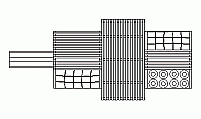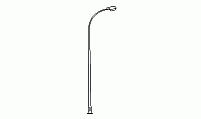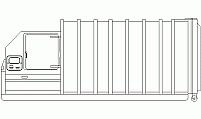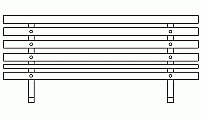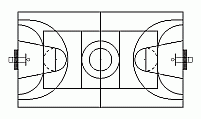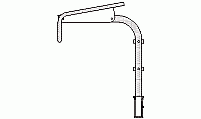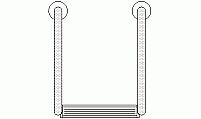CAD Blocks categories
 3D models
3D models home furniture
home furniture sanitary ware - bathrooms
sanitary ware - bathrooms professional equipment
professional equipment doors and windows
doors and windows people and animals
people and animals plants and trees
plants and trees vehicles - transports
vehicles - transports architectural details
architectural details mechanical - electrical
mechanical - electrical urban planning - civil works
urban planning - civil works safety health construction
safety health construction accessible design
accessible design drawing sheet
drawing sheet signals
signals construction machinery
construction machinery accessories and objects
accessories and objects maps and street maps
maps and street maps
Public Drinking Fountain Side Elevation CAD Block

size: 11 kb
category: street furniture
related categories:
description: Side view of a decorative public drinking fountain with a classic design, featuring a column, spout, and drainage basin.
file extension: .dwg CAD - AutoCAD software
Comprehensive Guide to Public Drinking Fountain Design and Features
Detailed Design of the Drinking Fountain
The drinking fountain showcases a classic ornamental design that combines aesthetics and functionality. The main body is a vertical column with a widened base for added stability, ensuring durability in public spaces. The column features decorative moldings and segmentations that enhance its visual appeal, while also contributing to its robust construction.
The fountain includes a horizontal spout positioned at a convenient height for easy access to potable water. Below the spout is a semicircular drainage basin, adorned with wavy or fluted designs that direct water into an integrated drainage system. The top of the column is crowned with a decorative cap, adding elegance and character to the overall structure. This CAD block provides an excellent reference for architects and designers planning public urban spaces.
Standard Dimensions and Measurements
Public drinking fountains are designed with accessibility and durability in mind. The height of the water spout generally ranges from 36 inches (91.4 cm), as per ADA compliance standards, ensuring ease of use for individuals in wheelchairs. For fountains catering to children, the spout height is typically 30 inches (76.2 cm) or lower, making it accessible for all users.
The drainage basin is commonly placed at a convenient height, with diameters ranging from 12 inches (30.5 cm) to 18 inches (45.7 cm), depending on the design. The widened base of the fountain ensures stability, often measuring up to 20 inches (50.8 cm) in diameter. These dimensions are consistent with modern manufacturing standards for public fountains in the United States.
Installation and Material Considerations
- What materials are typically used?
- Public fountains are commonly made from stainless steel, cast iron, and reinforced concrete. These materials provide durability and resistance to vandalism and weather conditions.
- How is the fountain installed?
- The fountain is mounted on a concrete base to ensure stability. Plumbing connections are established to a municipal water supply, and the structure is anchored securely with bolts or brackets.
- What type of drainage system is recommended?
- A concealed drainage system with a basin connected to underground piping prevents water pooling and ensures hygienic operation.
- What maintenance is required?
- Regular cleaning, plumbing inspections, and testing of water quality are essential to ensure the fountain remains functional and safe for public use.
- Are these fountains ADA-compliant?
- Yes, most modern fountains meet ADA standards, featuring spout heights and mechanisms that are accessible for individuals with disabilities.
Advantages of Ornamental Public Fountains
Ornamental public drinking fountains are a perfect combination of functionality and design. Their aesthetic appeal enhances the visual identity of urban spaces, while their durable construction ensures long-term performance. These fountains are highly practical for public hydration in parks, streets, and plazas, promoting health and community interaction.
Compared to simpler designs, ornamental fountains serve as both functional assets and decorative features. They encourage the responsible use of potable water and integrate seamlessly into public spaces with their timeless designs. Their durability and low maintenance requirements make them an ideal choice for architects and urban planners.
History and Global Variations of Drinking Fountains
The history of public drinking fountains dates back to ancient civilizations, where they were essential for providing clean drinking water in urban areas. Early designs were simple and functional, often featuring stone basins. Over time, fountains became more ornate, serving as both practical tools and symbols of community prosperity.
Modern variations of public fountains can be found worldwide. In Europe, marble fountains are common in historical cities, while in North America, stainless steel designs prioritize functionality and durability. In eco-conscious regions, solar-powered fountains and systems using recycled materials are increasingly popular, reflecting global innovation and environmental awareness.










